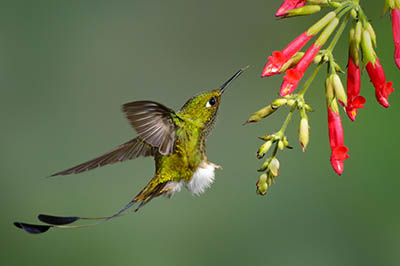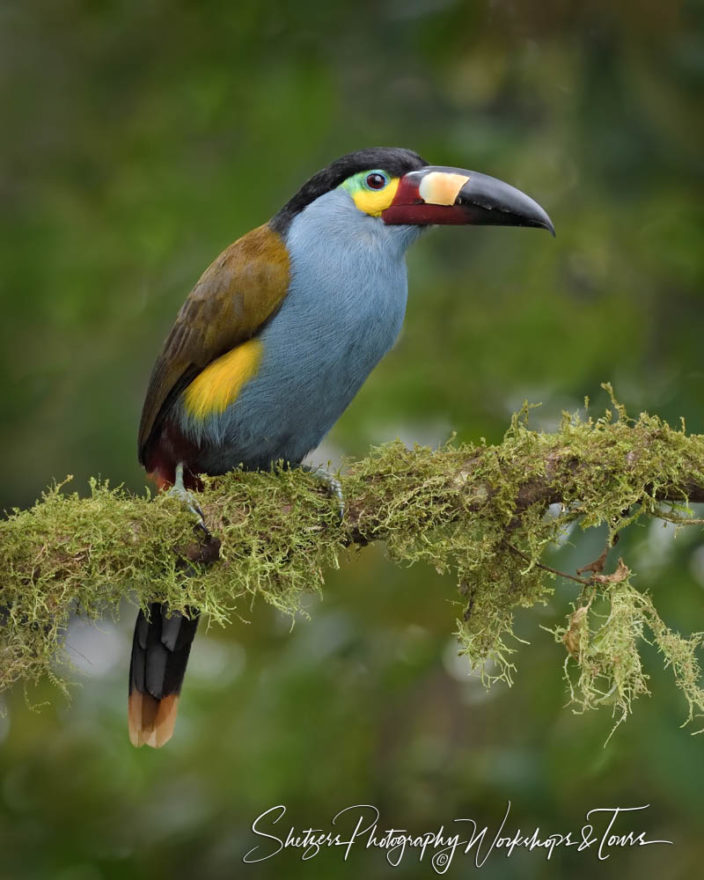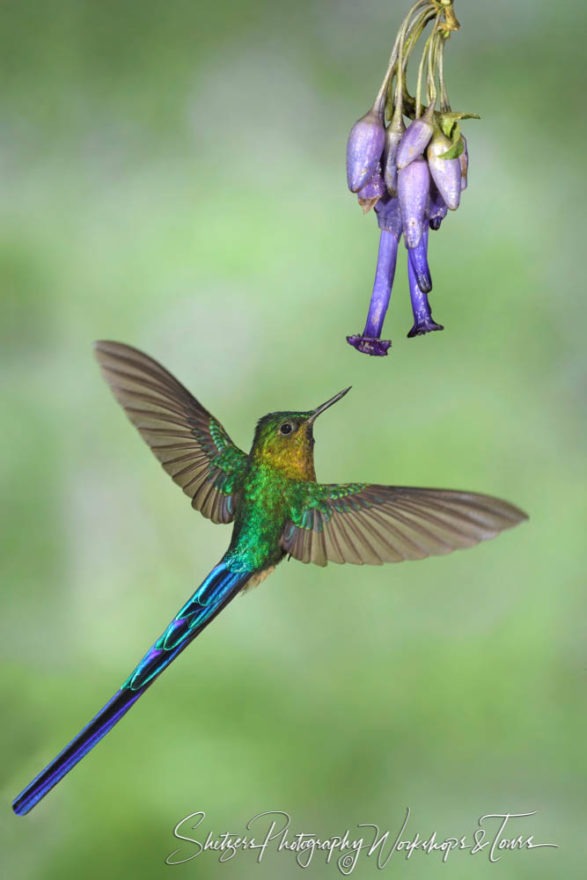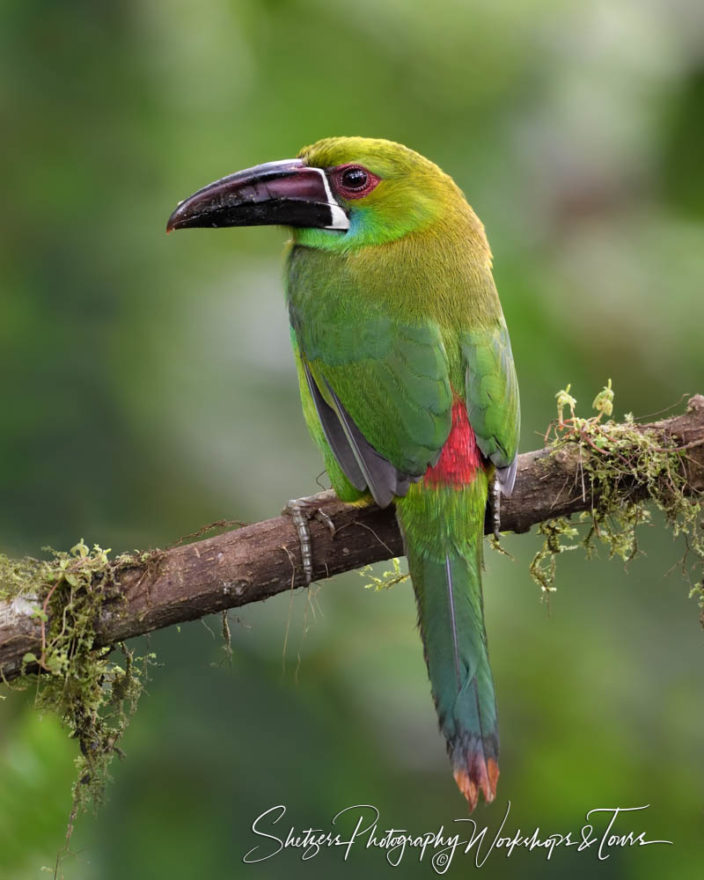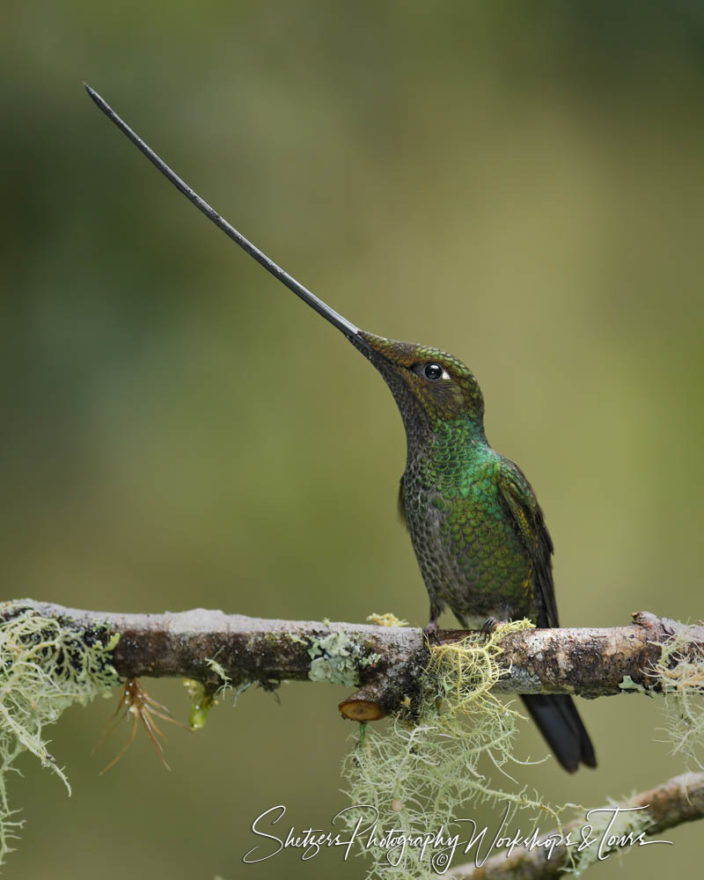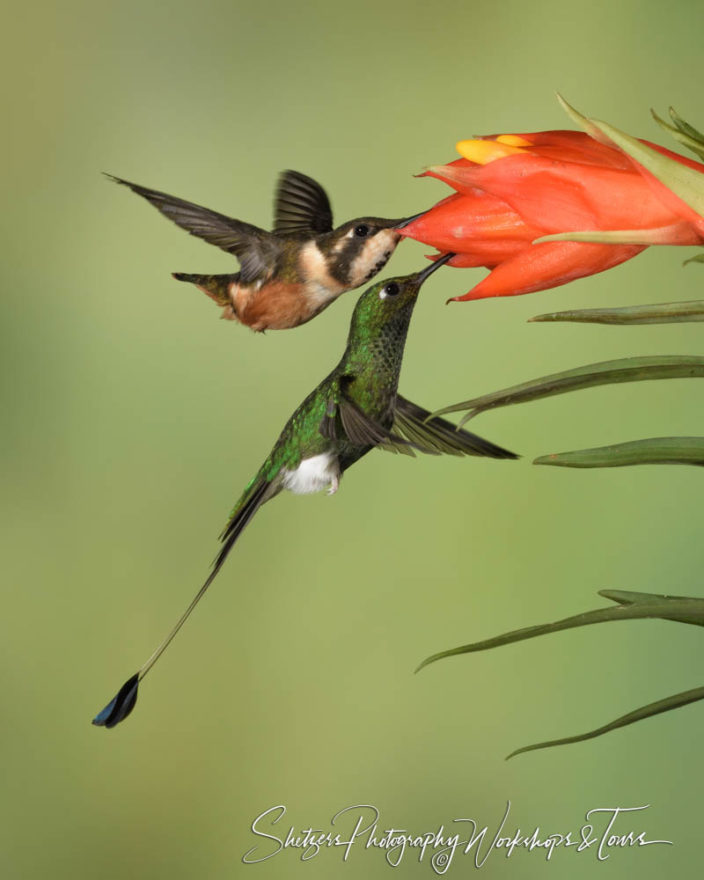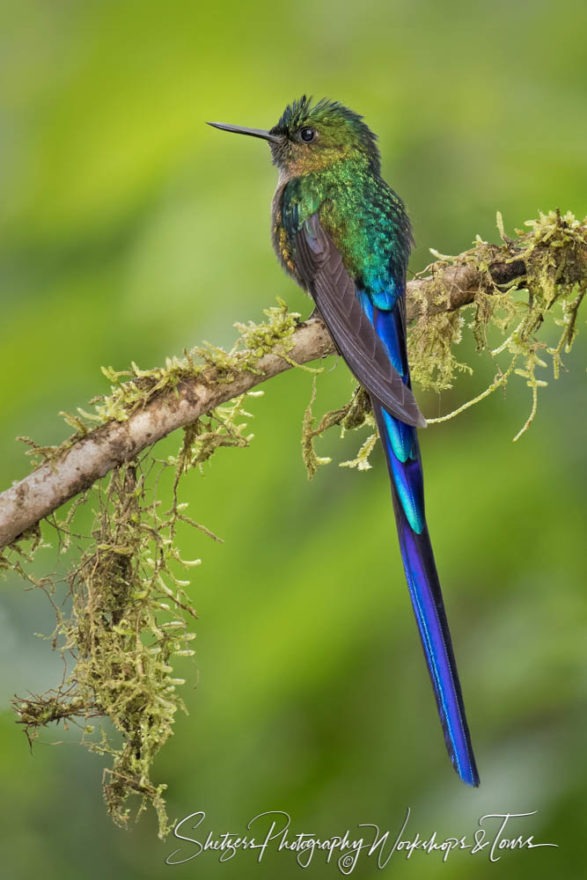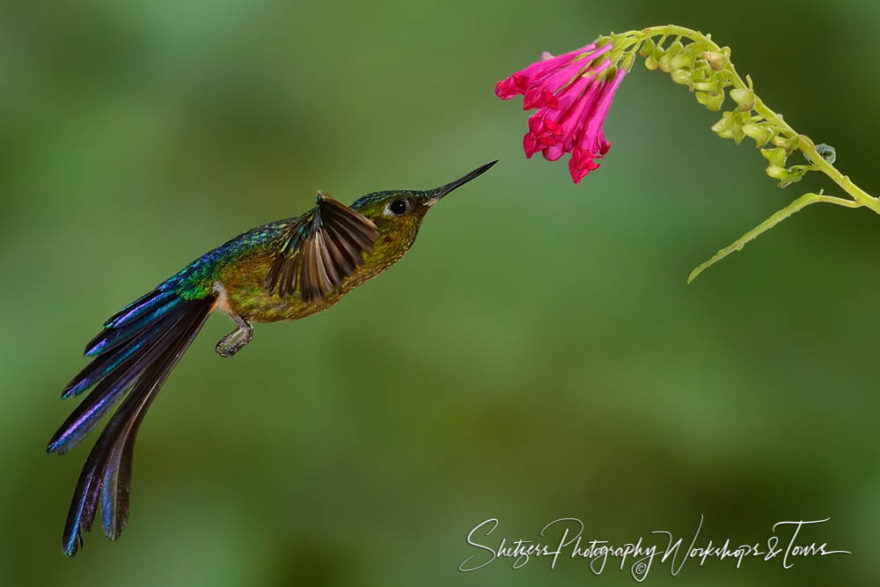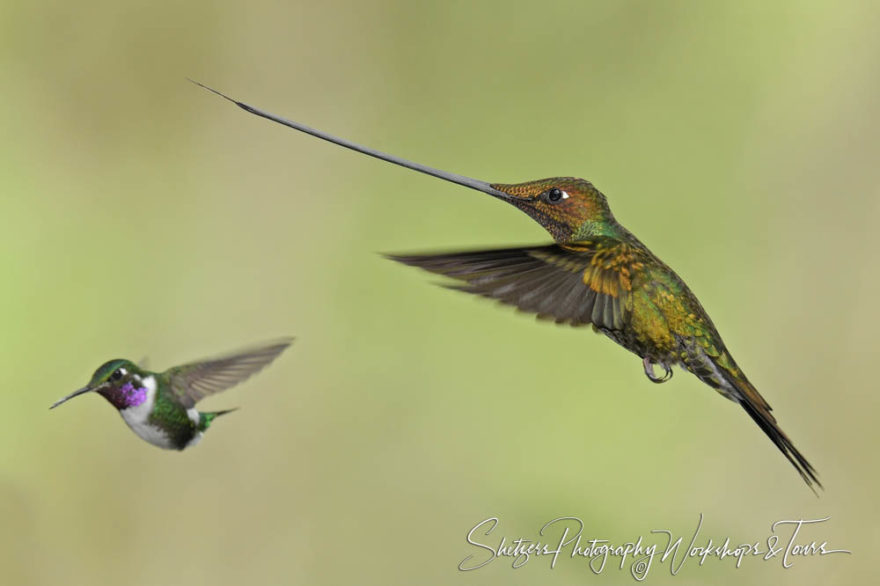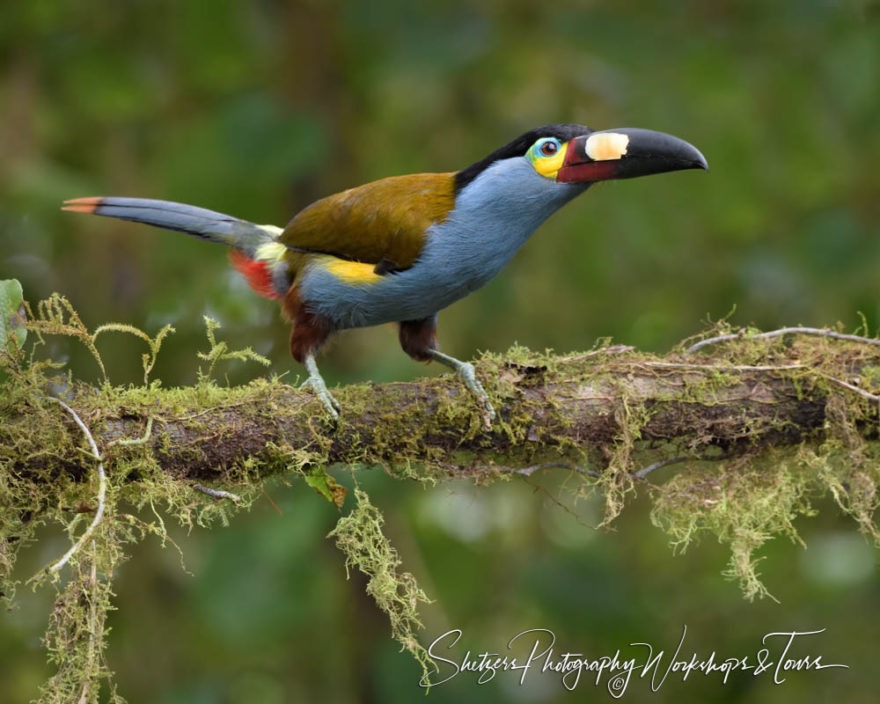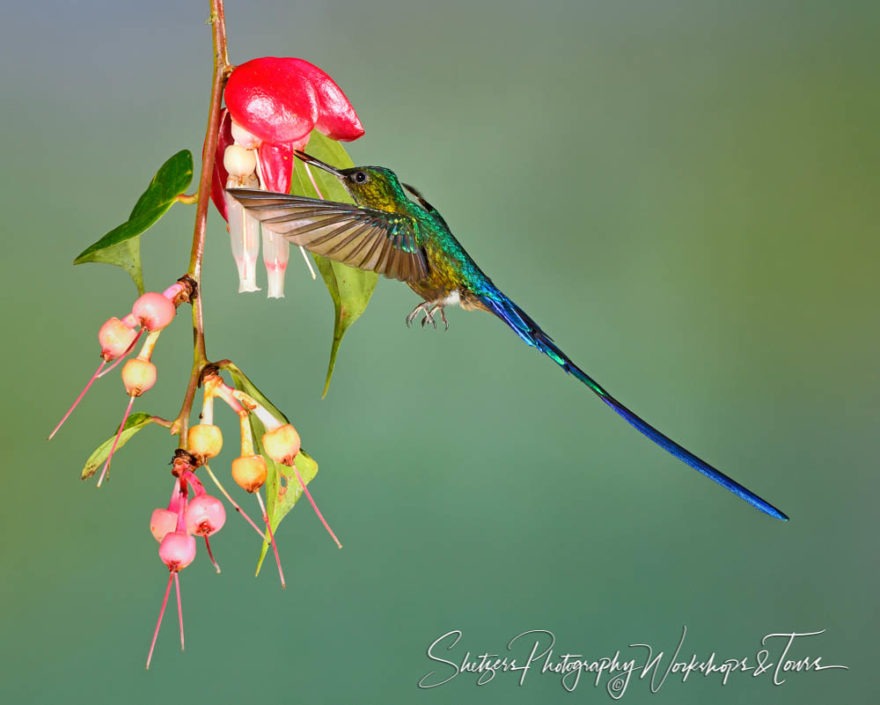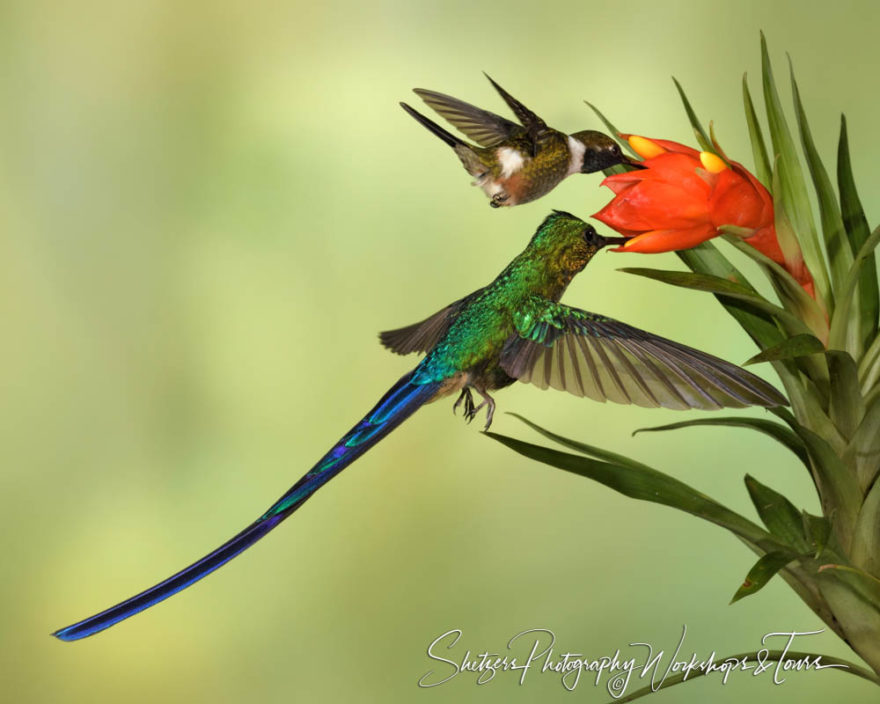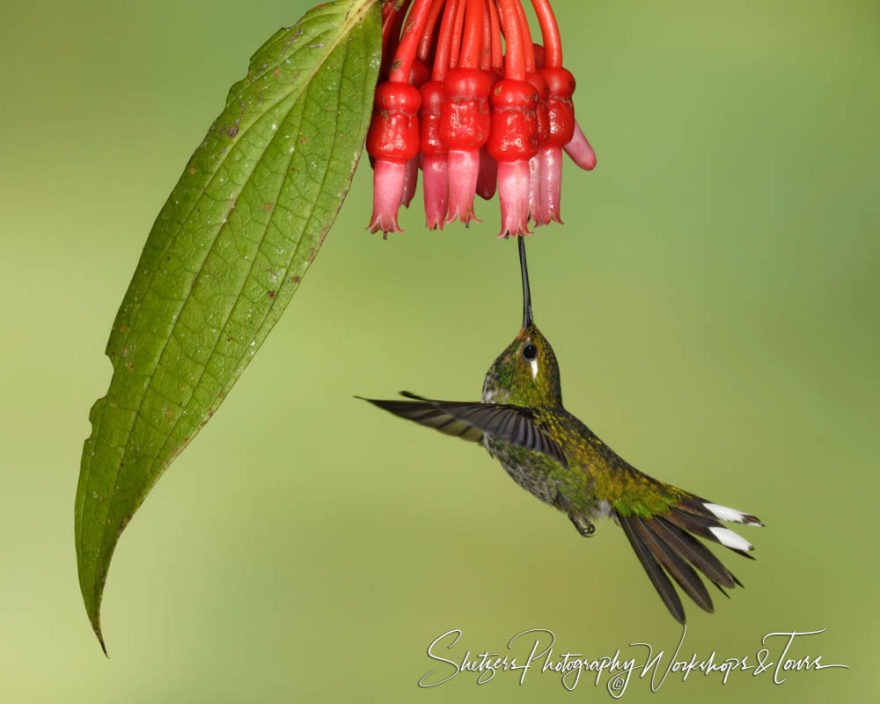Hummingbird Photography Workshop
Trip Not Currently Offered
Request new tripImportant Details
Locations: The best hummingbird lodges in EcuadorFee:
- $5,495 USD per person
- Single supplement (private room) $500
Deposit: $1,000
Group Size: 4 photographers—2 per light setup
Duration: 8 days, 7 nights
Skill Level: Beginner to pro
Discounts:
- Non-photographers get $250 off!
Trip Leader: Matt Shetzer
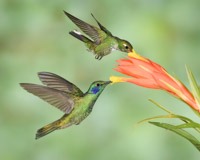 What comes to mind when you think of Ecuador? Is it soaring mountains, delicious coffee, or just standing at 0 degrees latitude?
What comes to mind when you think of Ecuador? Is it soaring mountains, delicious coffee, or just standing at 0 degrees latitude?
What about some of the world’s finest bird photography?
The Ecuadorian regions of Mindo, Pichincha, and Amagusa are world-famous for their diverse hummingbird populations, including several endemic species that can be found nowhere else.
In this hummingbird photography workshop, you’ll learn specialized techniques for capturing stunning images of hummingbirds as they feast on native flowers.
In pursuit of rare, colorful species, we’ll journey over mountain passes and across the equator to reach Ecuador’s famous cloud forests.
Though hummingbirds will be our primary focus, we’ll take advantage of our location to photograph other rare birds like the Cock-of-the-Rock, the colorful Plate-Billed Mountain Toucan, and vibrant Tanagers.
Over the course of 8 days, we will visit 5 of Ecuador’s finest hummingbird habitats to photograph diverse species and native flowers.
By the end of the tour, you’ll have created your own exclusive portfolio of exotic hummingbird images.
Why Ecuador for our Hummingbird Photo Workshop?
Ecuador is home to over 135 species of hummingbirds, granting this South American nation more hummingbird photography opportunities than any other nation!
The people of Ecuador have built a network of hummingbird lodges in the lushest natural areas of the country, complete with dedicated viewing areas for a rainbow of local hummingbird species.
Check out a list of all the hummingbird species you can find and photograph in Ecuador.
The weather in Ecuador is always comfortable. Temperatures range from 50 to 80 degrees Fahrenheit (10 to 27 Celsius), depending on elevation.
Ecuador’s hummingbird lodges cater specifically to photographers. Their time-tested processes attract rare and diverse groups of hummingbirds, allowing guests to photograph many different species in nature without having to travel too far.
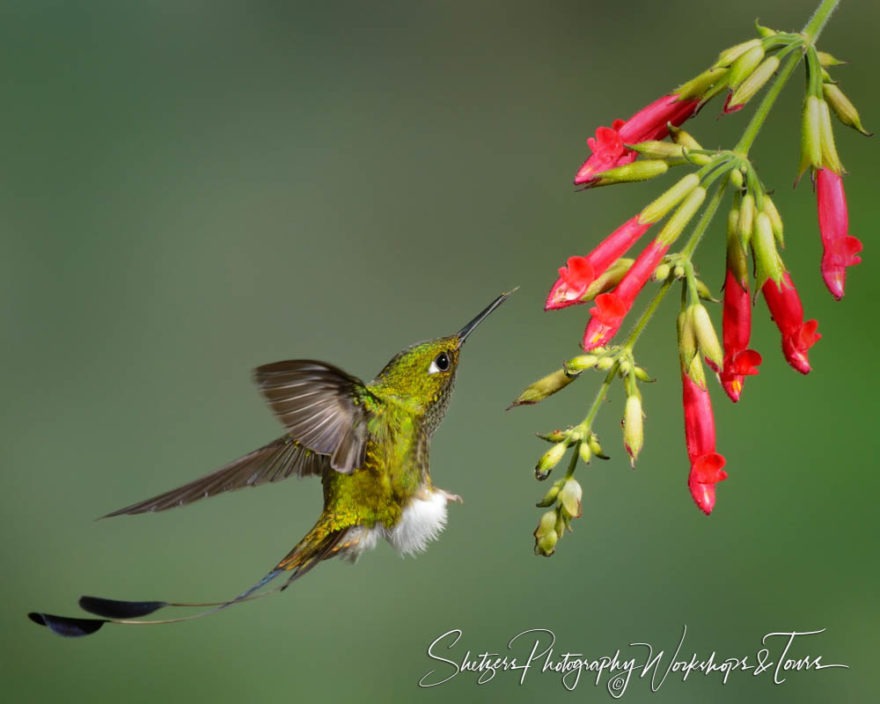
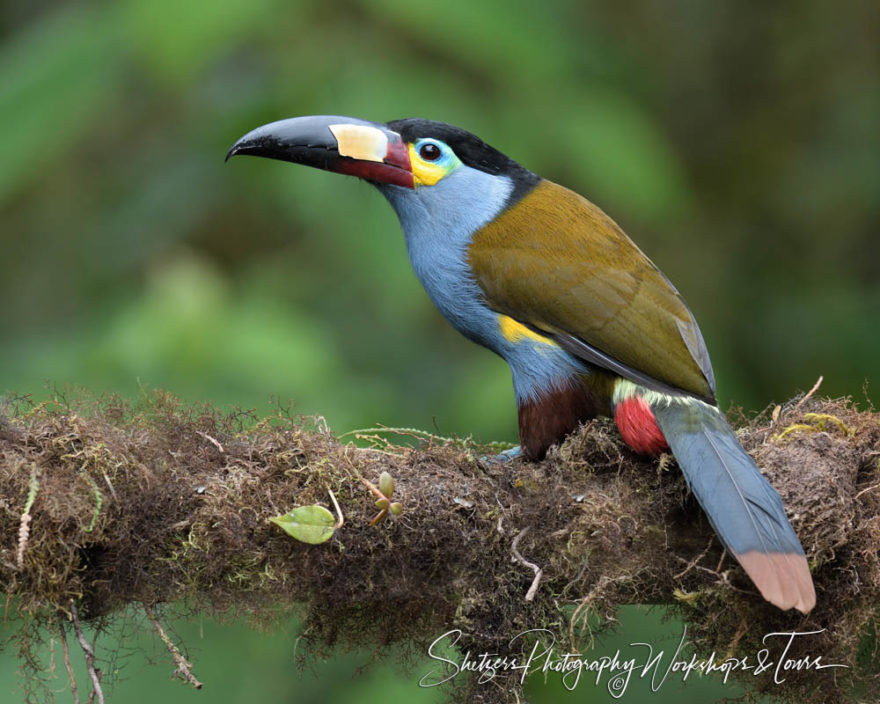
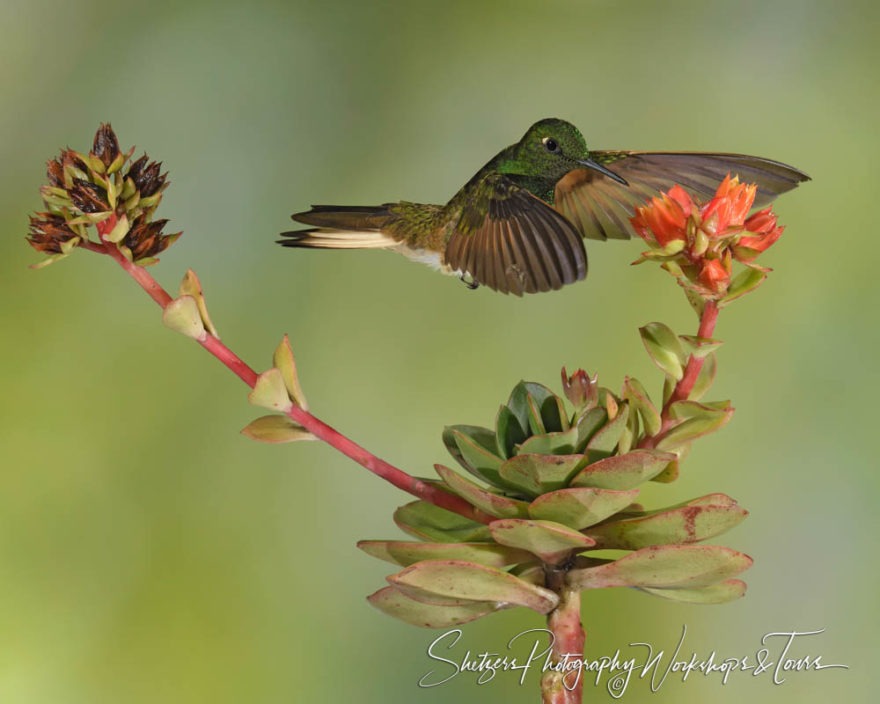
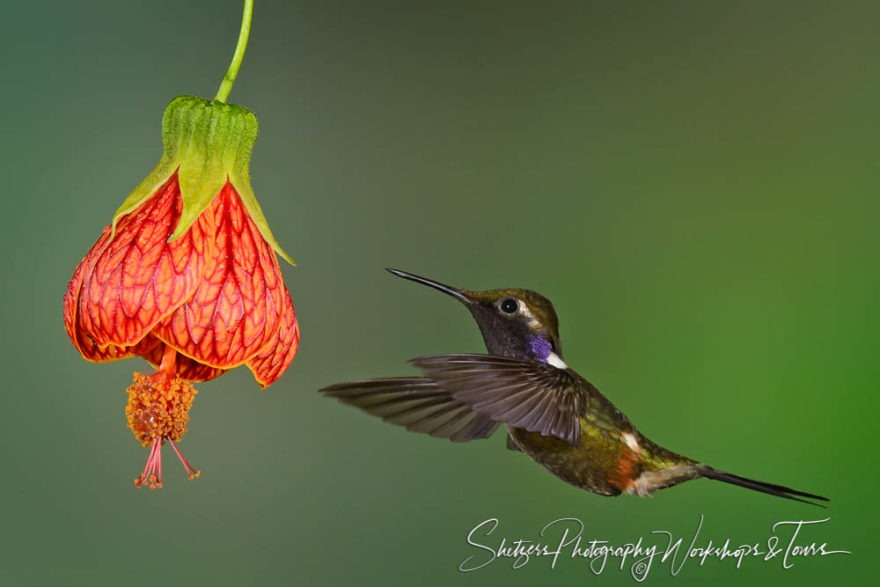
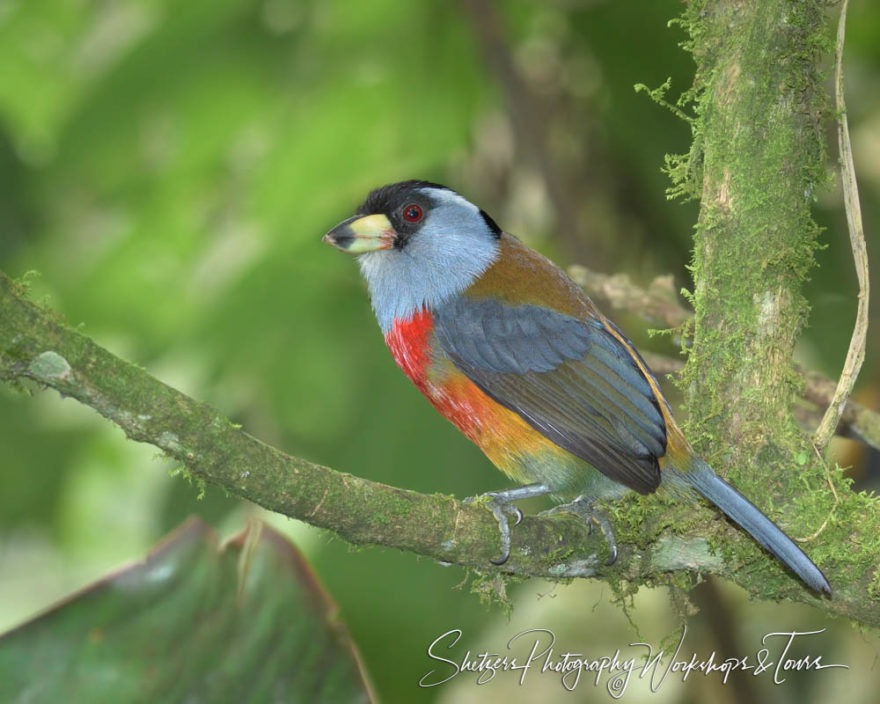
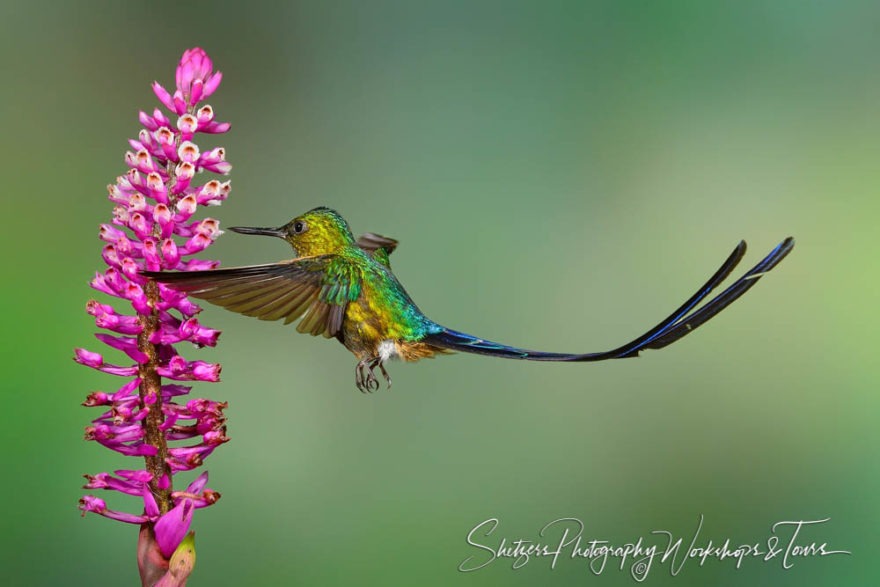
How do you photograph hummingbirds?
Hummingbirds are notoriously fast. These tiny birds can flap their wings up to 80 times a second, presenting quite the challenge for a photographer.
We’ll use multi-flash setups to help us catch these speedy birds in mid-flight or during feeding. Our state-of-the-art hummingbird photography setup uses a series of flashes synchronized by wireless radio transmitters. The multi-flash technique creates a strobe effect that produces incredibly precise images.
As a participant in the Hummingbird Photography Workshop, you’ll receive expert instruction and 1-on-1 guidance in cutting-edge techniques used to photograph hummingbirds. You will notice details in your pictures that are impossible to observe with the naked eye!
Topics we will cover:
- Master the Multi-Flash hummingbird light setup
- Balancing flash and natural light
- Natural light techniques for creating sharp and blurred wing images
- Priority exposures vs manual exposure – Benefits of each mode
- Different metering modes
- Techniques for sharp and high quality images
- Learn attractive compositions with local flowers
- Create natural looking images with flash
- Manual flash configuration to gain control
- Remote flash techniques and flash placement
- Focusing techniques for hummingbirds in flight
- Image post-processing with Lightroom and Photoshop
- Best Photoshop plugins to speed up post processing
Hummingbird species found at the lodges we visit
- Velvet-purple coronet (Boissonneaua jardini)
- Sword-billed hummingbird (Ensifera ensifera)
- Booted racket-tail (Ocreatus underwoodii)
- Violet-tailed sylph (Aglaiocercus coelestis)
- Andean emerald (Amazilia franciae)
- Brown inca (Coeligena wilsoni)
- Brown violetear (Colibri delphinae)
- Buff-tailed coronet (Boissonneaua flavescens)
- Collared inca (Coeligena torquata)
- Fawn-breasted brilliant (Heliodoxa rubinoides)
- Gorgeted woodstar (Chaetocercus heliodor)
- Lesser violetear (Colibri cyanotus)
- Green-crowned brilliant (Heliodoxa jacula)
- Mountain velvetbreast (Lafresnaya lafresnayi)
- Purple-bibbed whitetip (Urosticte benjamini)
- Purple-throated woodstar (Callipholox mitchellii)
- Rufous-tailed hummingbird (Amazilia tzacatl)
- Sparkling violetear (Colibri coruscans)
- White-whiskered hermit (Phaethornis yaruqui)
- Black-tailed trainbearer (Lesbia victoriae)
- Speckled hummingbird (Adelomyia melanogenys)
- Tawny-bellied hermit (Phaethornis syrmatophorus)
- Tyrian metaltail (Metallura tyrianthina)
- Wedge-billed hummingbird (Schistes geoffroyi)
- Western emerald (Chorostilbon melanorhynchus)
- White-bellied woodstar (Chaetocercus mulsant)
- White-necked jacobin (Florisuga mellivora)
- Empress brilliant (Heliodoxa imperatrix)
- Gorgeted sunangel (Heliangelus strophianus)
- Green-fronted lancebill (Doryfera ludovicae)
- Black-breasted puffleg (Eriocnemis nigrivestis)
- White-throated wedgebill (Schistes albogularis)
- Hoary puffleg (Haplophaedia lugens)
- Short-tailed woodstar (Myrmia micrura)
- Geoffroy’s wedgebill (Schistes geoffroyi)
- Sapphire-vented puffleg (Eriocnemis luciani)
- Purple-backed thornbill (Ramphomicron microrhynchum)
- Tourmaline Sunangel (Heliangelus exortis)
- Buff-winged Starfrontlet (Coeligena lutetiae)
Itinerary: Created by a Photographer, for Photographers
Day 1
Your driver will greet you at the airport upon your arrival in Quito and take you to your hotel for the night, a historic colonial building from the seventeenth century.
We’ll have a group dinner where we can get to know each other and talk about the exciting days to come. Enjoy a restful night, and get ready to start photographing hummingbirds in the morning!
Feel free to arrive early and spend time exploring Quito’s city center, one of the best-preserved in the Americas. The city boasts South America’s largest market, educational tours in many languages, and plenty of opportunities to try local cuisine. Some of the best sites include:
- Plaza San Francisco and the Church and Convent of St. Francis
- Casa Gangotena (a recently restored historic mansion and boutique hotel)
- Carondelet Palace (the seat of government of the Republic of Ecuador)
- Basilica del Voto Nacional (the largest neo-Gothic basilica in the Americas)
- The Metropolitan Cathedral (one of the oldest and largest Roman Catholic cathedrals)
- Gold leaf interior of the Church of the Society of Jesus
- Church of San Francisco, Church of El Sagrario and Church of Santo Domingo
If you have a day or more before the workshop, you can also enjoy adventure attractions like rafting, mountain biking, swimming in waterfalls, climbing snow-capped volcanoes, and cruising around the Galapagos Islands.
Day 2
After breakfast, we’ll set out early from the hotel for a beautiful three-hour drive through the mountains. We’ll descend 2,000 feet to our first lodge. Along the way, you’ll witness two ecosystems collide as the steep mountainside gives way to lush rainforest.
Our first lodge is located on a ridge in the heart of the Mindo Cloud Forest. We’ll arrive at about 11 a.m., and set up for shooting immediately. Over the next two days, you’ll have plenty of chances to capture beautiful images of some of the hummingbird species that visit this lodge’s feeders:
Hummingbird species found our at first lodge
- Velvet-purple coronet (Boissonneaua jardini)
- Booted racket-tail (Ocreatus underwoodii)
- Violet-tailed sylph (Aglaiocercus coelestis)
- Andean emerald (Amazilia franciae)
- Brown violetear (Colibri delphinae)
- Buff-tailed coronet (Boissonneaua flavescens)
- Collared inca (Coeligena torquata)
- Fawn-breasted brilliant (Heliodoxa rubinoides)
- Gorgeted woodstar (Chaetocercus heliodor)
- Lesser violetear (Colibri cyanotus)
- Purple-bibbed whitetip (Urosticte benjamini)
- Purple-throated woodstar (Callipholox mitchellii)
- Rufous-tailed hummingbird (Amazilia tzacatl)
- Sparkling violetear (Colibri coruscans)
- Speckled hummingbird (Adelomyia melanogenys)
- Tawny-bellied hermit (Phaethornis syrmatophorus)
- Tyrian metaltail (Metallura tyrianthina)
- While-bellied woodstar (Chaetocercus mulsant)
- White-necked jacobin (Florisuga mellivora)
- Empress brilliant (Heliodoxa imperatrix)
- Gorgeted sunangel (Heliangelus strophianus)
- Green-fronted lancebill (Doryfera ludovicae)
- Black-breasted puffleg (Eriocnemis nigrivestis)
- White-throated wedgebill (Schistes albogularis)
- Hoary puffleg (Haplophaedia lugens)
- Short-tailed woodstar (Myrmia micrura)
- Geoffroy’s wedgebill (Schistes geoffroyi)
In addition to the hummingbirds, you’ll get to photograph the plate-billed mountain toucan, a rare endemic species only found in Ecuador. You may also see toucan barbets, parrots, wood creepers, and eight species of tanagers.
We’ll enjoy the lodge’s finest hospitality, including traditional Ecuadorian meals and soups prepared by the staff — and of course, hot mugs of fresh Ecuadorian coffee.
Day 3
We’ll remain at the lodge all day and keep capturing dazzling hummingbird images from the deck. In the evening, we’ll relax after a hearty meal and learn about new photography techniques.
Day 4
After breakfast today, we’ll take a day trip 2 hours north to the Mashpi Amagusa Reserve, one of the best birding preserves in the world. The diversity of birds and abundance of colorful tanagers at Amagusa are absolutely unparalleled.
Some of the species we hope to photograph at Amagusa:
- White-whiskered Hermit
- Brown Violetear
- Green Thorntail
- Violet-tailed Sylph
- Brown Inca
- Velvet-purple Coronet
- Purple-bibbed Whitetip
- Green-crowned Brilliant
- Empress Brilliant
- Purple-throated Woodstar
- Rufous-tailed Hummingbird
- Andean Emerald
- Rose-faced Parrot
- Swallow-tailed Kite
- Toucan Barbet
- Crimson-rumped Toucanet
- Maroon-tailed Parakeet
- Zeledon’s Antbird (Choco)
- Buffy Tuftedcheek (Pacific)
- Orange-breasted Fruiteater
- Orange-bellied Euphonia
- Olive-crowned Yellowthroat
- Flame-rumped Tanager (Lemon-rumped)
- Moss-backed Tanager
- Black-chinned Mountain Tanager
- Glistening-green Tanager
- Blue-gray Tanager
- Rufous-throated Tanager
- Golden-naped Tanager
- Beryl-spangled Tanager
- Flame-faced Tanager
- Swallow Tanager
- Palm Tanager
- Lemon Rumped Tanager
- Yellow Throated Bush Tanager
- Golden Tanager
- Golden-collared Honeycreeper
- Buff-throated Saltator
- Common potoo
- Golden Headed Quetzal
- Smoky Brown Woodpecker
- Red Faced Spinetail
- Spotted Barbtail
If you’d rather continue photographing hummingbirds at the lodge, you’re welcome to stay behind and take advantage of the fine opportunities it offers. Later in the day, we’ll reunite at the lodge for another great meal and a lesson on techniques for capturing the best hummingbird pictures.
Day 5
Early this morning, we’ll join a local birding guide for an adventure to photograph the Cock-of-the-Rock, a beautiful and unique bird native to the area. Our hike will take us to a remote location where these shy birds can be found. If you wish to stay back at the lodge and continue photographing hummingbirds, you’re welcome to do so.
Late in the morning, we’ll set out down the valley to reach our next lodge at a slightly lower elevation. Out every window, you can see the awe-inspiring beauty of the rainforest, and watch the bird feeders where a variety of exotic birds gather.
Over the next 2 days, you’ll get the chance to photograph the following hummingbird species:
- Violet-tailed sylph (Aglaiocercus coelestis)
- Booted racket-tail (Ocreatus underwoodii)
- Purple-bibbed whitetip (Urosticte benjamini)
- Fawn-breasted brilliant (Heliodoxa rubinoides)
- Brown violetear (Colibri delphinae)
- Lesser violetear (Colibri cycanotus)
- Brown inca (Coeligena wilsoni)
- Purple-throated woodstar (Callipholox mitchellii)
- Green-crowned brilliant (Heliodoxa jacula)
- Western emerald (Chorostilbon melanorhynchus)
- Rufous-tailed hummingbird (Amazilia tzacatl)
- Andean emerald (Amazilia franciae)
- Buff-tailed coronet (Boissonneaua flavescens)
- Tawny-bellied hermit (Phaethornis syrmatophorus)
- Wedge-billed hummingbird (Schistes geoffroyi)
- Sparkling violetear (Colibri coruscans)
- White-necked jacobin (Florisuga mellivora)
Day 6
We’ll spend the whole day at the bird lodge, capturing dazzling images of hummingbirds as they flit around the feeders and along the edge of the forest canopy. In your free time, you can hike in the Cloud Forest to view the colorful and unique birds of Ecuador, or try to catch a glimpse of secretive bird species rarely seen in the wild.
Day 7
This morning, we’ll leave our lodge and head south, gaining altitude as we travel to a very remote reserve. As our altitude climbs, our species list changes to include a whole new range of hummingbirds — including the famous Sword-billed hummingbird, the only bird in the world with a beak longer than its body.
Some of the unique species found at this lodge:
- Sword-billed hummingbird (Ensifera ensifera)
- Black-tailed trainbearer (Lesbia victoriae)
- Collared inca (Coeligena torquata)
- Mountain velvetbreast (Lafresnaya lafresnayi)
- Sparkling violetear (Colibri coruscans)
- Tyrian metaltail (Metallura tyrianthina)
- Chestnut-naped antpitta
- White-bellied woodstar (Chaetocercus mulsant)
- Sapphire-vented puffleg (Eriocnemis luciani)
- Purple-backed thornbill (Ramphomicron microrhynchum)
- Buff-tailed coronet (Boissonneaua flavescens)
- Crimson-mantled woodpecker
- Rufous antpitta
- Masked flowerpiercer
As the day comes to a close, we’ll pack up our gear and head back to Quito for the night.
Day 8
On the final day of the workshop, we’ll have breakfast, then travel directly to the airport to depart. There, we’ll say our goodbyes and begin the journey home — or onto the next adventure.
If you have extra time afterwards, Ecuador offers an abundance of activities to enjoy:
- The historic center of Quito is lined with captivating architecture, including churches, chapels, monasteries, convents, museums, and colonial plazas. The Quito city center was one of the very first UNESCO World Cultural Heritage Sites, and remains one of the largest, best-preserved historic centers in the Americas.
- A visit to the Galapagos Islands provides exciting opportunities to walk along sandy beaches, watch sea lions and tortoises, snorkel with sharks, and explore the lush island landscapes that inspired Charles Darwin’s theory of evolution. If you can’t get enough photography, consider joining our Galapagos East or Galapagos West tours.
- Avid birdwatchers will enjoy the myriad colorful birds and amazing wildlife species along the Amazon River in Ecuador. In the jungle habitat of the Amazon, you can set off on birding hikes, canoe trips, and nighttime excursions, and even go fishing for piranhas!
(Tour schedules are subject to change due to weather or other unforeseen events.)
Price Includes
- 7 nights’ accommodation at premier bird lodges. Double occupancy by default, single occupancy available
- Transportation to and from the Quito airport
- Transportation between lodges
- All meals during the workshop (expect to gain a couple of pounds on the trip!)
- Multi-flash photography setups, including flashes, radio triggers, light stands, and backgrounds
- Field instruction from a professional photographer guide (maximum of 4 photographers per guide)
- Instruction on photo editing techniques
- A planning package, including recommendations on the proper camera gear and clothing
We take care of everything from the moment you reach Quito. The only thing you need to think about is having a fantastic time and capturing stunning hummingbird images.
Before you embark on your journey, we’re happy to provide a free phone consultation with your trip leader, who will help you figure out what equipment to bring, answer questions about the locale, and offer general photography guide to make sure you’re ready to capture your dream image.
Not Included
- Transportation to/from Quito, Ecuador
- Alcoholic drinks
- Lodge and driver tips
- Travel/cancellation/emergency evacuation insurance
- Personal items
- If you would like to spend a day with a bird guide, we can arrange that in advance with any of the lodges. Additional costs apply, paid directly to the lodge.
Physical Requirements
Hummingbirds of Ecuador: Mindo and Beyond is one of our easier workshops physically. Shooting takes place primarily from patios at the lodges, so those with limited mobility won’t have any problems. However you will need to be able to walk about 300 feet on cobbled paths.
The day trip to Amagusa and the outing to photograph the Cock-of-the-Rock can be more physically demanding due to the terrain. However, both of these outings are optional.
For those who enjoy hiking, there are numerous trails at each lodge to explore.
If you are concerned about the physical demands of this trip, please contact us. We would be glad to discuss the typical day and make a plan to meet your needs.
Photography Skill Level
We welcome any and all photographers, from beginners to professionals.
Weather Conditions
The weather in Ecuador is very comfortable. Temperatures range from 70 to 80 degrees Fahrenheit (21 to 27 Celsius) at our first two lodges. The weather at the third lodge is a little cooler, ranging from 55 to 75 degrees Fahrenheit (13 to 24 Celsius).
Trip Leader
As a professional wildlife photograpehr, Matt Shetzer has been photographing hummingbirds for more than a decade, and loves being outside and watching these amazing birds. Sharing this beauty with guests is always one of the highlights of his year.
What You’ll Learn
- Learn how to set up and configure a multi-flash setup to achieve high-quality natural-looking hummingbird images and freeze the high-speed action of these amazing birds
- Instruction on how to photograph hummingbirds in natural light
- Proper exposure for the scene
- Getting the most out of the histogram
- Focus techniques for that crisp image
- Achieving the best composition
- Motion blur to add movement to your images
- Mastering the modes (When to shoot Manual, Aperture and Shutter Priorities)
- Image workup techniques with Photoshop and Lightroom. At each workshop, we demonstrate how to work up attendees’ images from scratch, displaying our nondestructive techniques to produce the highest quality image
- Best Photoshop Plugins to use
- Color Correction
- Layers and Masks (Masks are targeted adjustments)
- Noise reduction and sharpening techniques
- Lightroom and portfolio management
- Photography discussions – We’ll review select images and discuss which images work and why to expand your skills and move to the next level
Camera Equipment To Bring
- A telephoto lens from 200 to 400mm (500-600mm can be used as well, but it’s not necessary)
- A wide-angle lens from 24-100 for landscapes
- Tripod with gimbal or ball head
- Remote trigger/cable release
- Lots of memory cards. We typically shoot about 1,000 images a day, so bring more than you think you’ll need
If you need assistance selecting gear to meet your photography goals, just let us know. All guests will receive a detailed planning packet prior to the trip. Feel free to schedule an optional phone consultation if you need more guidance.
Non-Photographer Guests
The Ecuadorian rainforest and its fantastic bird lodges provide a spectacular experience for everyone, not just photographers. Non-photographers are welcome to join us in the field and participate in all activities, at a discount of $250.00.
Cancellations and Trip Insurance
We strongly recommend that you purchase trip insurance from a third-party operator to protect your travel investment against medical emergencies, cancellations, trip interruptions, weather delays, missed connections, baggage loss or delay, emergency evacuation and repatriation, or any other eventualities.
Because Shetzers Photography must pay fees for accommodation and transportation far in advance of the workshop, all paid tour fees are non-refundable, non-transferable and cannot be applied to a future workshop. All tour cancellations must be submitted in writing, and will result in loss of deposit and all fees paid.
Please review our Workshop Terms and Conditions.
COVID-19 and Variants Policy
If regulatory restrictions in the hosting location prevent the workshop from running as scheduled, the workshop will be rescheduled to a future date. All participants must meet hosting country vaccination requirements. No refunds or rescheduling will be allowed due to guest cancellations when the workshop is able to run following all host location regulatory restrictions.
If regulatory restrictions in the hosting location prevent the workshop from running as scheduled, the workshop will be rescheduled to a later date.If you feel there is any reason now or in the future that you may not be able to attend the workshop, we recommend that you do not sign up at this time, as no refunds or rescheduling will be allowed.
Waitlist – If a Trip Is Sold Out
Over the last few years, all of our trips have sold out. We start to fill up about a year before the workshop, and keep the website updated with the current workshop availability. If a workshop is full, you can add your name to the waitlist. If a spot becomes available, we’ll immediately contact the guests on the waitlist in the order they signed up.
We tend to have the most cancellations 90-180 days before a trip starts, so being on the waitlist gives you a good chance of getting onto the trip. Joining the waitlist requires no deposit — we’ll ask for the deposit when we offer you the chance to take an open spot.
Payment and Tour Reservations
The cost for the tour is $5,495.00 for double-occupancy rooms. We offer single accommodations for an additional $500.00 per person.
To reserve a spot on this tour, we require a $1,000.00 deposit per person, paid by credit card at the time of registration. Full tour payments must be submitted 90 days prior to the start of the tour, paid by check or bank transfer.
Once we’ve received the final payment, we’ll send out detailed trip-planning documents to each guest.
Our workshops are filled on a first-come, first-serve basis. Workshop availability will be updated on this page.
If you have any additional questions or would like to speak to one of us, please contact us at 303-888-2710. We’d be happy to answer your questions!

